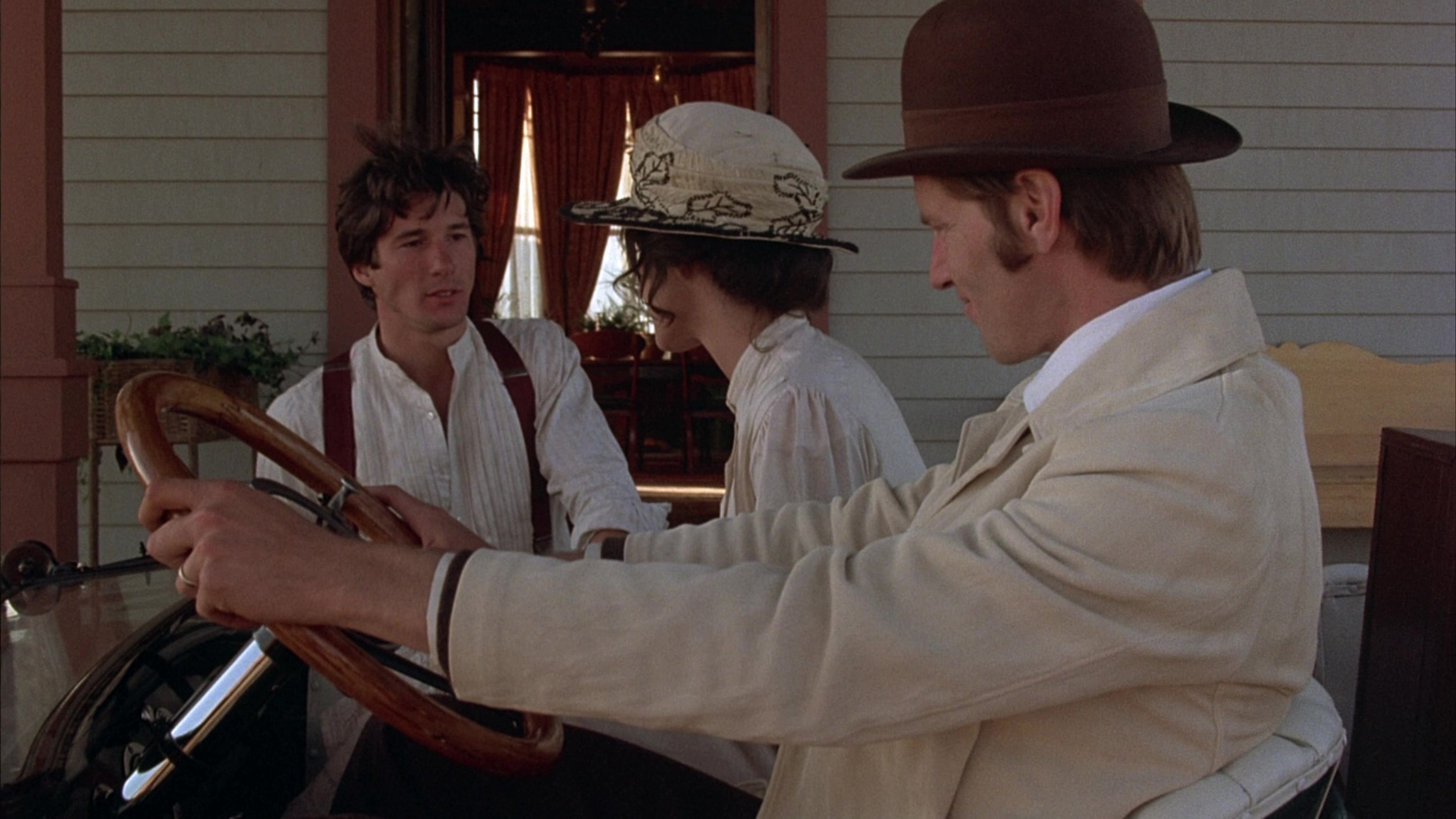Terrence Malick
Days of Heaven
- DirectorTerrence Malick
- CinematographerNéstor Almendros
DITTE MILSTED A true masterpiece and a genuine work of art. Visually stunning. The use of natural light, the warm colors, the mood, the landscapes, the overhanging dark skies, and the warm, dusty fields - still so present in my mind. It seems as if everything was shot during the magic hour; I don’t think a single filmmaker would have that opportunity today.

The Story Behind Days of Heaven
When Days of Heaven premiered in 1978, it didn’t look like any other American film. Its skies glowed with the light of a vanished world, its characters seemed half-mythic, and its story unfolded like a remembered dream. It was only Terrence Malick’s second feature, but already he had transformed realism into visual poetry - a vision so fragile and luminous it felt as if it might evaporate under analysis.
After the cult success of Badlands (1973), Malick wanted to make a film that spoke less through words than through the rhythms of nature. The story he chose was simple, almost biblical: in 1916, a Chicago laborer (Richard Gere) and his lover (Brooke Adams) flee the city after a crime and find work harvesting wheat in the Texas Panhandle. Posing as siblings, they catch the attention of a wealthy but ailing farmer (Sam Shepard). When the farmer falls for the woman, desire, deceit, and jealousy smolder beneath the endless summer sky.
But Days of Heaven was never meant to be a straightforward love triangle. Malick imagined it as a kind of cinematic hymn - a meditation on the fragility of human life against the vastness of the earth. Working with cinematographer Néstor Almendros (and later Haskell Wexler), he shot the film almost entirely during the “magic hour,” that fleeting window of golden light before dusk. Each day’s usable shooting time was barely twenty minutes, but the results were breathtaking: every frame glows like a painting by Andrew Wyeth or Edward Hopper, filled with wind, wheat, and silence.
The production
The production became legend for its devotion to beauty. Actors waited for hours for the right light. The crew worked with minimal artificial illumination. Malick, often rewriting scenes on the spot, encouraged improvisation and observation over dialogue. He wanted his cast to live inside the landscape - to be shaped by it as much as they shaped it.
In post-production, Malick found the film’s soul in an unexpected place: the offhand, childlike narration of Linda Manz, who plays Gere’s young sister. Her plainspoken voice turned what could have been a melodrama into a tone poem, reframing the story through innocence and wonder. “He was like a farmer himself,” she says of the doomed rich man, “out there watching things grow.”
The legacy
It took two years for Malick to finish editing Days of Heaven. He cut hundreds of pages of dialogue, sculpting the film into a flow of images, sounds, and silences - something closer to music than to conventional storytelling. When it was released, critics were divided: too slow, too strange, too beautiful. Yet time has vindicated it. The film won the Oscar for Best Cinematography and is now regarded as one of the most visually exquisite films ever made, a landmark in the art of cinematic naturalism.
In the decades since, Days of Heaven has come to define Malick’s elusive genius - his search for transcendence in the ordinary, his belief that light itself can tell a story. It remains a vision of America seen not through history or politics but through the eyes of a drifting child, a whisper of memory glowing in the last light of the day.









